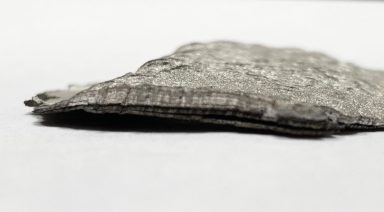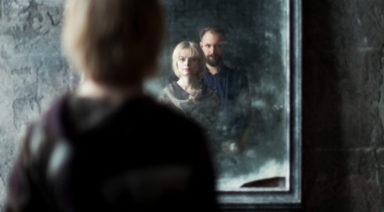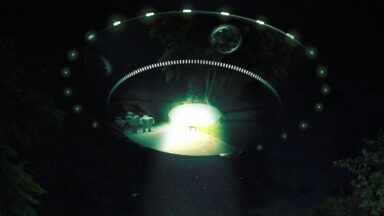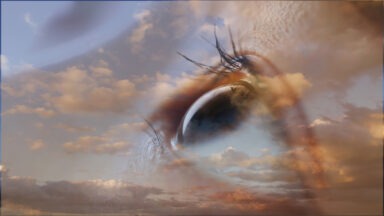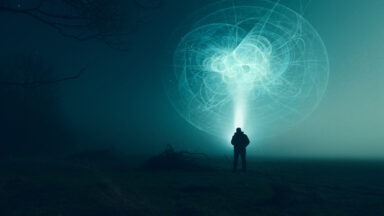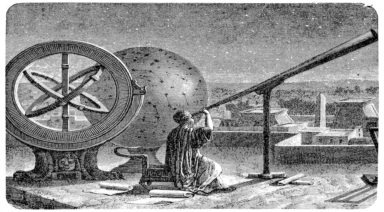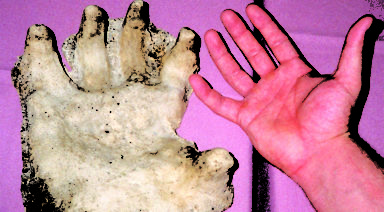Professor: UFOs, Aliens are Human Anthropologists From Future

In a recent experiment, scientists reversed the arrow of time for a split second, simulating the possibility of time travel using quantum particles called qubits. The experiment was a far cry from achieving time travel anytime in the near future, but if it provides even a modicum of possibility it would support Dr. Michael P. Masters’ theory that UFOs and aliens might just be future anthropologists traveling back in time to study their ancestors — us.
Masters completed his Ph.D. in Anthropology at the Ohio State University and is currently a professor of biological anthropology at Montana Tech. His resume also cites coursework in astrobiology, astronomy, and physics – needless to say, he has some pretty relevant credentials.
Our Future Humanoid Alien Descendants
In his book Identified Flying Objects: A Multidisciplinary Scientific Approach to the UFO Phenomenon, Masters explores the evolution of humans in relation to our hominin ancestors, and our likely progression as a species moving forward. Based on the trajectory of our physical, intellectual, and technological development, he says he believes the common trope of the hairless, large-headed, technologically advanced alien is likely where evolution is leading us.
Humans have evolved to become (relatively) hairless creatures compared to our ancestors and many anthropologists believe we’ll eventually lose it entirely as it doesn’t really serve much of a function anymore, save aesthetics. Add to that the fact that our skull size has doubled and tripled to support a larger brain compared to the smaller cranium of ancestors like Homo erectus and Australopithecus, respectively.
“The phenomenon may be our own distant descendants coming back through time to study us in their own evolutionary past,” Masters told a local television station in his home state of Montana. “The extra-tempestrials are ubiquitously reported as being bipedal, upright-walking, five fingers on each hand and foot, bi-lateral symmetry, that they have two eyes, a mouth, a nose, and they can communicate with us in our own languages.”
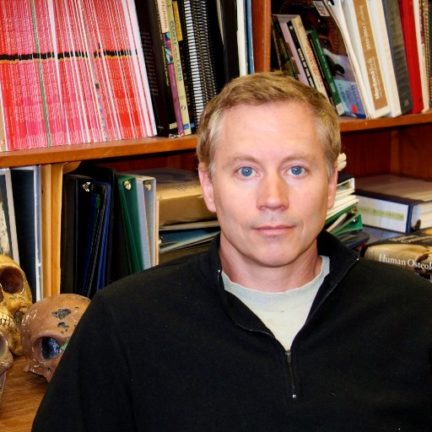
Dr Michael P. Masters
If that’s the case, and close encounters with aliens are really close encounters with our future relatives, the term extraterrestrial wouldn’t be appropriate to describe our humanoid alien descendants. That’s why Masters coined the term, extratempestrials.
Much like the theme of Michael Crichton’s 1999 novel Timeline, Masters imagines how incredible it would be for future archeologists and anthropologists to travel back in time to study the eras and people we’ve only imagined from our history textbooks.
“As an anthropologist who has worked on and directed numerous archaeological digs in Africa, France, and throughout the United States, it is easy to conceptualize just how much more could be learned about our own evolutionary history, if we currently possessed the technology to visit past periods of time,” Masters said.
The Alien Anthropologist
Language is another facet of his argument: reported encounters with extraterrestrials often involve their ability to communicate with us through the same mechanisms we use for communication.
Masters posits the possibility that extraterrestrials from another planet with a different atmosphere, different physics, and different evolution might use different forms of vibratory communication – not necessarily through language.
Though admittedly just a theory, Masters had his book peer-reviewed by a number of his colleagues to verify some of the foundations of his conclusion.
The theory is an interesting one and might help explain or corroborate the theory that extraterrestrials sometimes appear to act as inter-dimensional entities, who are able to transcend time and space through apparently inexplicable means.
And as we consider some of the bizarre elements of UFO encounters and their seeming ability to zip in and out of existence, appearing to defy known laws of physics, one can’t help but think of Arthur C. Clarke’s famous line, “any sufficiently advanced technology is indistinguishable from magic.”
UFO technology appears to be magic based on current technological capabilities, but much of our technology today would look like magic to anyone living a century ago, let alone hundreds, or thousands of years ago. What if we were to fast forward hundred or thousands of years from now?
Given that Moore’s Law — that is, computer processing power doubles every two years– has maintained, while quantum physics has conceptually made many science fiction themes now seem within the realm of possibility, time travel might just become science fact. That is, if our species is able to survive long enough to see it come to fruition, but if Masters’ theory is right, it appears we must have.
Hillary Clinton Met With Laurance S. Rockefeller to Discuss UFOs

In 1995, then-first lady Hillary Clinton took a trip to the Rockefeller Ranch in Jackson, WY, where she met with billionaire philanthropist Laurance S. Rockefeller. Of the many things the two discussed that weekend, one topic became the focal point of media coverage and subsequent rumblings within the world of ufology—a project that became known as The Rockefeller Initiative.
Rockefeller was a known proponent of the UFO disclosure movement, having funded a number of projects to prove the existence of extraterrestrial intelligence. His pursuit in bringing this issue to Clinton’s attention quickly became obvious, marked by the now-famous image of the two walking in the woods, Clinton holding a copy of “Are We Alone: Philosophical Implications of the Discovery of Extraterrestrial Life” by Paul Davies.
And while the Rockefeller Initiative was taken over by other ufologists after his death in 2004, Dr. Steven Greer says he had been involved in discussions with the late Rockefeller years before he famously met with the first lady.
Beginning in the early ‘90s, Dr. Greer began putting together materials from research he was conducting into the ET phenomenon. This consisted of countless reports from hundreds of government insiders, FAA personnel, and former military brass who wanted to come forward and testify in front of Congress about the uncanny, first-hand experiences they’d had with UFOs and ETs. Dr. Greer’s meticulous efforts would culminate in a public forum nearly a decade later at his highly publicized 2001 National Press Club event.




